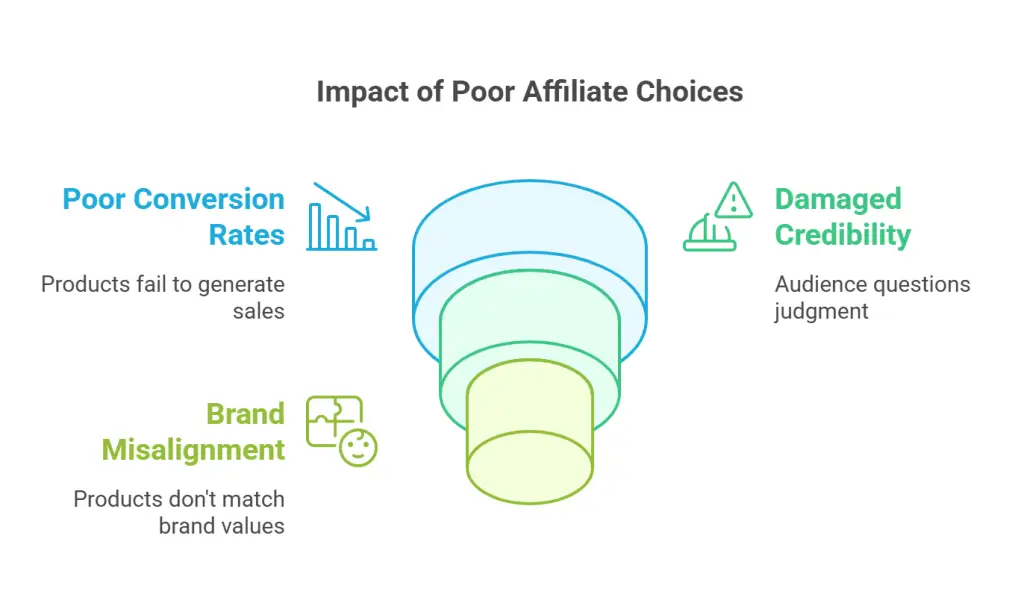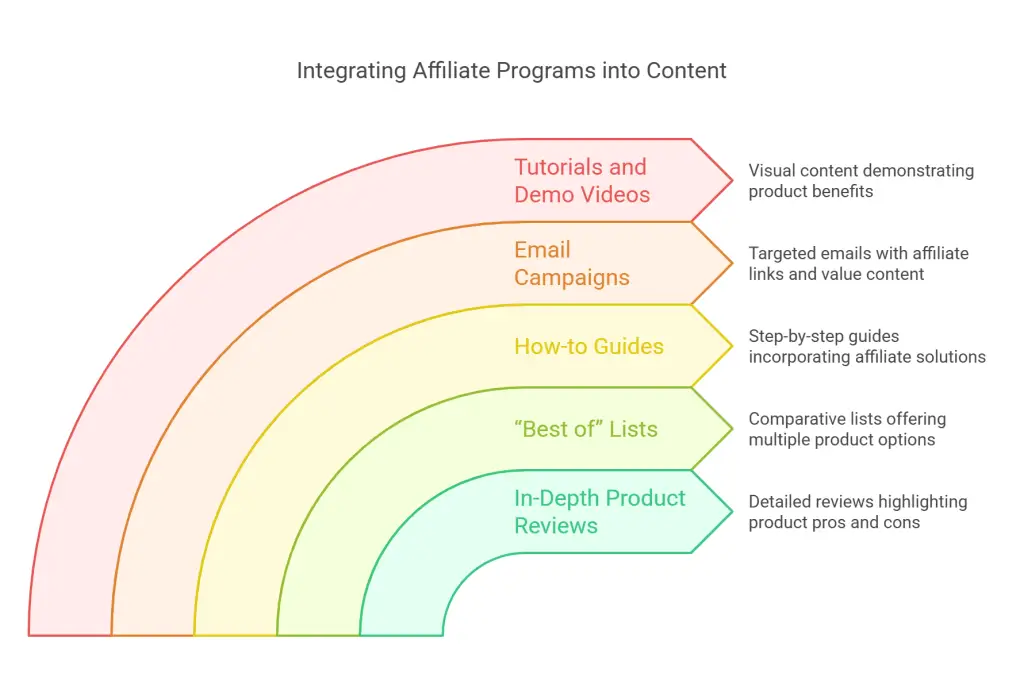Affiliate marketing can be one of the most profitable ways to monetize your online presence, whether through a blog, website, or social media channels. However, for affiliate marketing to work effectively, you need to choose the best affiliate programs that align with your niche and your audience’s needs. Picking the wrong program could result in wasted time, minimal earnings, or even damage to your credibility. In this guide, we’ll explore everything you need to know about how to choose the right affiliate programs that resonate with your niche and ensure long-term success.
Why Choosing the Best Affiliate Programs Is Crucial
Affiliate marketing works on the foundation of trust. If your audience trusts you as a source of valuable, relevant information, they are more likely to act on your recommendations. However, the wrong affiliate program or product can damage that trust, leading to:
- Poor Conversion Rates: If the products you’re promoting aren’t relevant or valuable to your audience, they won’t convert into sales, which means little to no commissions for you.
- Damaged Credibility: Recommending a poor-quality or irrelevant product can cause your audience to question your judgment, resulting in a loss of trust.
- Misalignment with Your Brand: If the affiliate products you promote don’t align with your core message or values, you risk creating a disconnect between your brand and your audience’s expectations.
For these reasons, it’s essential to be selective when choosing affiliate programs. The goal is to find programs that resonate with your audience, fit seamlessly into your content, and provide value to both you and your readers.

Understanding Your Niche and Audience
Before you even start evaluating affiliate programs, it’s crucial to have a deep understanding of your niche and audience. The better you understand who you’re speaking to and what they need, the easier it will be to find affiliate programs that are a perfect match.
Define Your Niche
Your niche is the specific topic or industry you focus on. It could be anything from fitness, personal finance, travel, fashion, or even highly specialized areas like vegan cooking or minimalist lifestyle. Your niche defines the type of content you produce and the kind of products your audience is likely to be interested in.
For example, if you’re in the fitness niche, your audience might be interested in workout equipment, supplements, or online training programs. If you’re in the travel niche, they might be looking for travel gear, insurance, or accommodation deals. The more focused your niche, the easier it is to identify relevant affiliate products.
Know Your Audience
Understanding your audience is equally important. Ask yourself the following questions:
- What problems does my audience need help solving?
- What products or services do they already use?
- What are their spending habits? Are they more inclined toward budget-friendly products or high-end, premium offerings?
By answering these questions, you’ll have a clearer idea of what kinds of affiliate programs will be most appealing to your audience.

Research the Best Affiliate Programs in Your Niche
Once you have a strong understanding of your niche and audience, it’s time to start researching potential affiliate programs. There are several ways you can find relevant programs.
Affiliate Networks
Affiliate networks act as intermediaries between companies (merchants) and affiliates. They offer a wide range of affiliate programs from various companies, making it easy to find programs in your niche. Popular affiliate networks include:
- ShareASale: Offers a large variety of affiliate programs in categories like fashion, home and garden, health and fitness, and more.
- CJ Affiliate (formerly Commission Junction): Known for partnering with well-established brands and offering a wide range of programs.
- Rakuten Advertising: Another well-respected network with global reach and partnerships with major retailers.
- Amazon Associates: One of the most popular affiliate programs, offering a vast selection of products across every imaginable category.
These networks allow you to browse different categories, view program details, and sign up directly.

Direct Affiliate Programs
Many companies run their own affiliate programs in-house. These are often found by visiting the company’s website and looking for an “Affiliate Program” or “Partnership” link in the footer. Direct affiliate programs can sometimes offer better commission rates and more personalized support than those found on networks. Examples include:
- Bluehost for web hosting
- ConvertKit for email marketing software
- Teachable for online course platforms
These companies typically focus on products and services specific to their industry, making them a good choice if they align with your niche.

Competitor Analysis
One way to identify great affiliate programs is by analyzing your competitors. Look at the websites, blogs, or social media influencers in your niche and see what products or services they are promoting. Often, a quick scroll through their content will reveal which affiliate programs they are part of. You can also use tools like SimilarWeb or SEMrush to analyze their website and discover which affiliate networks or programs they are part of.
Evaluate Affiliate Program Features
Not all affiliate programs are created equal. Once you’ve identified several potential programs, it’s time to evaluate them based on key factors that will determine whether they’re a good fit for your business.
Commission Structure
The commission rate is one of the most critical factors to consider. Affiliate programs offer different types of commissions, such as:
- Flat-rate commissions: A fixed dollar amount per sale (e.g., $50 per sign-up).
- Percentage-based commissions: A percentage of the sale (e.g., 10% of the sale price).
Some programs may offer recurring commissions, where you earn money every time a customer you referred makes a repeat purchase, which can be particularly beneficial for subscription-based services. For example, web hosting services like Bluehost or email marketing tools like ConvertKit often offer recurring commissions.
While it’s tempting to choose programs with high commission rates, also consider the price of the product. For example, a 5% commission on a $1,000 product might be more lucrative than a 50% commission on a $20 product.
Cookie Duration
Cookie duration refers to the length of time a customer’s actions are tracked after they click your affiliate link. If someone clicks your link but doesn’t purchase immediately, cookie duration ensures you still get credited if they make a purchase later. Common cookie durations are 24 hours, 30 days, 90 days, or even longer.
For example, Amazon Associates has a 24-hour cookie duration, meaning if a customer doesn’t make a purchase within 24 hours of clicking your link, you won’t earn a commission. On the other hand, CJ Affiliate programs often offer 30- to 90-day cookies, giving you a larger window to earn a commission.
Program Reputation and Support
Reputation is essential when selecting an affiliate program. A well-established program with positive reviews and a good track record of paying affiliates on time is always preferable. Look for testimonials from other affiliates, review forums, and check for any negative feedback regarding delayed payments or poor support.
Also, consider the level of support offered. Some programs provide robust resources, such as marketing materials, training, and dedicated affiliate managers to help you succeed. This can be especially useful if you’re new to affiliate marketing or want to maximize your earning potential.
Payout Threshold and Frequency
Each affiliate program has a different payout structure. Some will pay monthly, while others may pay quarterly or after reaching a specific threshold (e.g., $50 or $100). Before joining a program, make sure you’re comfortable with the payout terms.
Programs with low thresholds are more beginner-friendly, as they allow you to get paid more frequently. Conversely, programs with higher thresholds may offer bigger payouts, but you might have to wait longer to receive your earnings.
Product Quality and Relevance
At the end of the day, the products or services you promote must be high-quality and relevant to your audience. If you wouldn’t buy the product yourself, or if it doesn’t align with your niche, it’s probably not a good fit. Promoting subpar products can lead to poor conversions and damage your reputation with your audience.
Whenever possible, test the product yourself before promoting it. If you have firsthand experience with the product, you can write more compelling and authentic content around it, which will resonate better with your audience.

Match Affiliate Programs to Your Content Strategy
Once you’ve evaluated potential affiliate programs, it’s time to integrate them into your content strategy. Promoting affiliate products should feel natural and provide value to your readers, rather than coming off as a sales pitch. Here’s how to seamlessly incorporate affiliate programs into your content.
Create In-Depth Product Reviews
One of the most effective ways to promote affiliate products is through detailed, honest product reviews. In these reviews, you can share your personal experience, highlight the benefits and drawbacks, and provide your affiliate link as a call to action. Readers value authenticity, so if they can tell you’re genuinely passionate about a product, they’re more likely to click through and make a purchase.
Example: If you’re in the personal finance niche, you might review different financial planning tools or budgeting apps, explaining how each one works and why you recommend them.
Publish “Best of” Lists
Another popular format for affiliate marketing is the “Best of” list. These articles compare several products in the same category and offer pros and cons for each one, giving readers a variety of options to choose from. This type of content is particularly useful for readers who are in the research phase and haven’t decided which product to buy yet.
Example: In the travel niche, you might create a post titled “Best Travel Backpacks for Digital Nomads,” listing your top five or ten choices, complete with affiliate links.
Write How-to Guides
If your niche revolves around solving specific problems, consider writing how-to guides that naturally incorporate affiliate products. These guides help your audience by showing them step-by-step how to solve a particular problem, and the affiliate product you recommend will be positioned as a solution to their needs.
Example: If you’re in the DIY or home improvement niche, a post like “How to Build a Home Gym on a Budget” could include affiliate links to affordable gym equipment.
Use Affiliate Links in Email Campaigns
Email marketing can also be a powerful channel for affiliate promotions. Whether you send out newsletters, product recommendations, or even exclusive discounts from affiliate partners, including affiliate links in your emails allows you to reach a more targeted audience.
Make sure your emails provide value and don’t just feel like a sales pitch. Share stories, tips, or case studies that align with the product, and include your affiliate links as a helpful resource.
Create Tutorials and Demo Videos
For certain products, visual content like tutorials and demo videos can significantly boost conversions. If you’re promoting a tool, service, or product that requires explanation, consider creating a video where you walk through how to use it or demonstrate its benefits.
Videos are especially effective on platforms like YouTube or Instagram, where affiliate links can be included in the video description or within the content itself.

Track Your Performance and Optimize
Once you’ve started promoting affiliate products, it’s crucial to track your performance and continuously optimize your strategy. Most affiliate programs provide detailed reports that show metrics like clicks, conversions, and earnings, giving you insight into which products and strategies are working best.
Key Metrics to Monitor
- Click-Through Rate (CTR): The percentage of people who clicked your affiliate link after viewing it. A low CTR could indicate that your affiliate links aren’t prominent enough, or that the product isn’t resonating with your audience.
- Conversion Rate: The percentage of people who clicked your affiliate link and then made a purchase. Low conversion rates could suggest that the product isn’t well-aligned with your audience or that your review didn’t provide enough convincing information.
- Earnings per Click (EPC): A measure of how much you earn for each click on your affiliate link. This helps you understand the profitability of different products and programs.
By analyzing these metrics, you can identify underperforming products and adjust your content or promotional tactics accordingly. You may also discover new opportunities, such as expanding your affiliate efforts to different product categories or testing out new promotional formats.

Conclusion
Choosing the best affiliate programs for you is critical to your success as an affiliate marketer. By understanding your audience, researching the best affiliate programs in your niche, evaluating key factors like commission rates and cookie duration, and matching products to your content strategy, you can build a sustainable income stream that aligns with your niche.
Remember, the key to successful affiliate marketing lies in authenticity and trust. Always prioritize your audience’s needs, and choose products that genuinely provide value. When your audience trusts your recommendations, they are more likely to act on them, creating a win-win situation for both you and your affiliate partners.
Further reading
Affiliate Marketing For Beginners: What It Is + How to Succeed By Si Quan Ong. Updated: July 8, 2023 https://ahrefs.com/blog/affiliate-marketing







